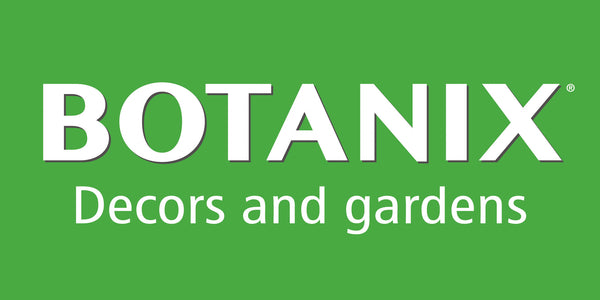
At Botanix, we know that every gardener pours their heart into making their plantings a success. A well-kept secret to ensure vigorous recovery and healthy growth for your new additions, whether annuals, perennials, shrubs, or trees, is the use of a transplant fertilizer. But what is it exactly, and why is it so beneficial? Let's dive into the world of these precious gardening allies!
What is a Transplant Fertilizer?
Transplant fertilizer, also called starter fertilizer, is a formula specially designed to help plants overcome the stress of moving from a pot to the ground or from one location to another. Unlike conventional growth fertilizers, its composition is generally richer in phosphorus (P), a key element for developing a strong and extensive root system. It also often contains potassium (K) to increase the plant's overall resilience, and a moderate amount of nitrogen (N) to avoid overstimulating foliage growth at the expense of the roots. Typical formulations you might encounter are, for example, 4-10-2 or 10-52-10.
The idea is simple: a well-rooted plant will establish more quickly, be more robust, and ultimately, more productive and floriferous.
The Undeniable Benefits for Your Plants
Using a transplant fertilizer is an investment in the long-term health of your plants. Here’s why:
- Root Growth Stimulation: Phosphorus plays a direct role in forming new roots and strengthening existing ones. Healthy, abundant roots are the foundation of a vigorous plant.
- Significant Reduction in Transplant Shock: Moving to a new environment is stressful for a plant. Fertilizer helps lessen this shock, allowing for a gentler and quicker adaptation.
- Improved Water and Nutrient Uptake: A well-developed root system covers a larger soil area, thus accessing water and essential nutrients more easily.
- Increased Stress Resistance: Whether it's temporary drought, slight temperature variations, or competition from other plants, a good start makes your protected ones stronger. This is particularly important when the growing season can be short and conditions sometimes harsh.
- Quick Recovery and Sustained Growth: By minimizing adaptation time, the plant can devote its energy to healthy growth and generous flowering or fruiting.
How to Correctly Apply Transplant Fertilizer
Application is simple, but a few golden rules are necessary to maximize effectiveness and avoid any issues. As each product has its own specific dosages and application methods, always read the manufacturer's instructions carefully:
- At Planting Time: Ideally, incorporate the fertilizer directly into the planting hole. Mix it well with the soil you will use to fill the hole.
- Root Contact: For products containing mycorrhizae, direct contact with the roots is crucial. Water the plant thoroughly and apply the fertilizer all around the contour of the root ball and roots. For other types, ensure good mixing in the root zone.
- Water Generously: After planting and applying the fertilizer, a good watering helps dissolve the nutrients and make them available to the roots, while also settling the soil.
- Avoid Over-Fertilizing: More isn't always better! Excess fertilizer can "burn" delicate young roots. Always follow the manufacturer's guidelines for quantities.

Natural Options: Bone Meal and Mycorrhizae – Powerful Allies
For those who prefer natural and effective solutions, two options particularly stand out:
Bone Meal: A Revisited Classic
Bone meal (or bone powder) is a natural and organic source of phosphorus and calcium.
- Benefits: It promotes excellent root development and contributes to the plant's structure. Its slow release of nutrients ensures prolonged and gentle feeding, perfect for new plantings. It's an excellent choice for perennials, bulbs, shrubs, and roses.
- At Botanix: You'll find transplant fertilizers containing bone meal, like the excellent 'Transplanter Fertilizer with bone meal 4-10-2' from Acti-Sol, a Quebec product recognized for organic farming, or Botanix's own 'Bone Meal Transplanter Fertilizer'.
Mycorrhizae: The Magic of Beneficial Fungi
Mycorrhizae are microscopic fungi that live in symbiosis with plant roots (about 90% of terrestrial plants!).
- Benefits: By associating with roots, mycorrhizae greatly increase their capacity for water and nutrient absorption, especially phosphorus, zinc, and copper. They improve plants' tolerance to drought, soil diseases, and transplant stress. It’s a real natural boost for quick and healthy establishment.
- How does it work? Mycorrhizal filaments explore a much larger soil volume than roots alone.
- Application: It is crucial that the product (often in powder or granule form) comes into direct contact with the roots during planting. Sprinkle it at the bottom of the hole and on the root ball.
Ask for advice on mycorrhizae-based products like those in the MYKE range, which are widely tested and appreciated by gardeners.
An Essential Boost for Good Establishment
Giving your plants the best possible start with a transplant fertilizer is a wise decision. A well-established root system before the deep cold arrives considerably increases the chances of winter survival and ensures vigorous regrowth the following spring. Likewise, for spring or summer plantings, this initial boost is the key to a successful season.
Never underestimate the power of a good start! Using a transplant fertilizer is a simple gesture that makes a huge difference in the success of your plantings. Whether you opt for a classic formula, bone meal, or the power of mycorrhizae, you’re giving your plants the optimal conditions to flourish.
Visit us at your nearest Botanix garden centre! Our experts will be happy to advise you on the transplant fertilizer best suited to your needs and your plants.




